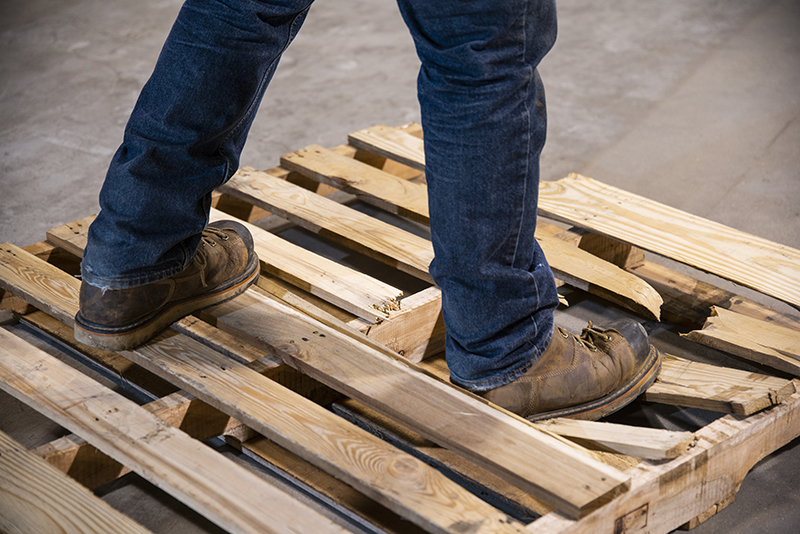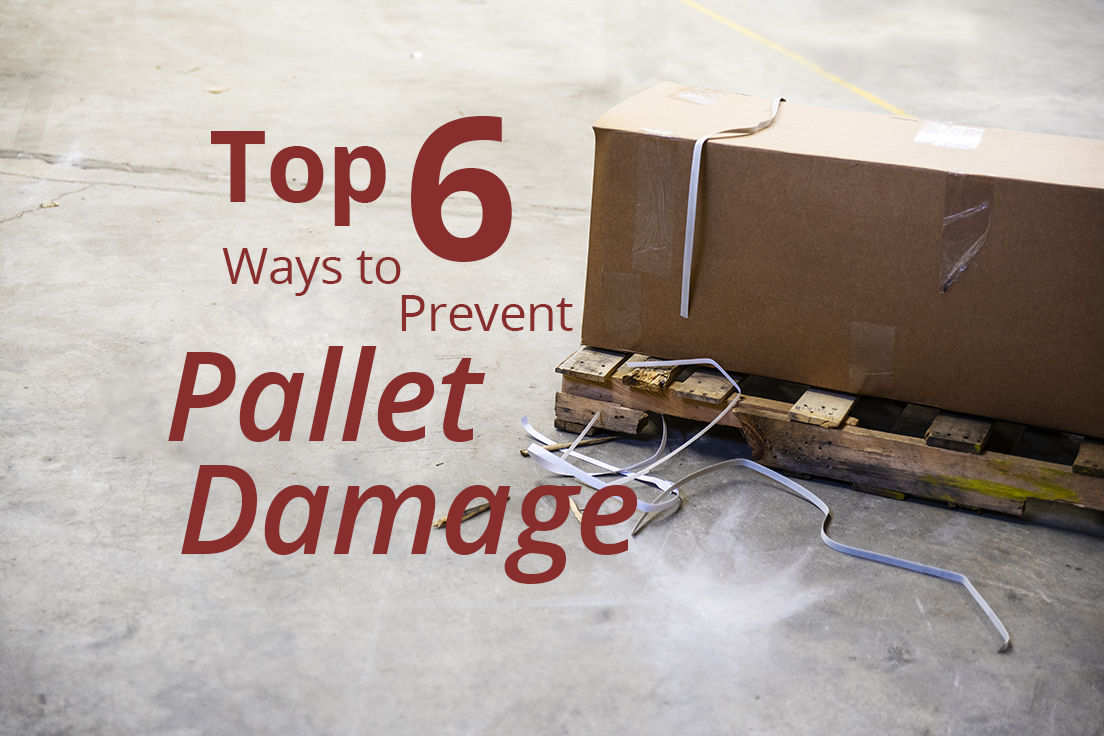Finding ways to prevent pallet damage is an important component of managing your supply chain because damaged pallets, crates, and wood packaging can cause serious problems for your manufacturing process and product delivery. While we’ve all seen damaged pallets, the cost of pallet damage goes far beyond aesthetics (although pallet appearance may be a type of damage that’s important to your organization too).
Compromised pallets, crates, and wood packaging can carry a lot of potential risk. Not only do broken pallets risk damage to the products you are transporting or storing, but they also pose a risk to the personnel moving the product. Failure to prevent pallet damage may even put your customer or end-user at risk.
Unfortunately, wood packaging can become compromised in a lot of different ways, but there are some things that you can do to help prevent pallet damage.
1. Use the Right Pallet for the Right Product
Using the right pallet for the job may seem like a no-brainer, but you’d be surprised at how many organizations get this one wrong. When you palletize products, it’s important to make sure that your product fits properly on the pallet. Here are a few things to look at:
2. Ensure Pallets are Properly Constructed
When your pallets, or other industrial wood packaging, is designed by a packaging engineer, you can be sure that it will be designed and built to specifications that ensure pallet damage is kept to a minimum. After all, custom pallets are designed to keep your product safe during transport and storage, so minimizing pallet damage is obviously crucial to doing that.
With regards to wood packaging construction, one of the things that isn’t often discussed is the types of fasteners used. Using the correct fastener for the product being palletized, the weight carried, and the manner of transport is also critical to preventing pallet damage.
3. Keep Pallets Dry
Moisture is something that’s often overlooked with regard to damage prevention. Strictly speaking, moisture doesn’t really damage pallets, but if you’re in an industry where pallet mold is a serious concern, then the presence of pallet mold renders your pallets unusable. For all intents and purposes, that makes them damaged for industries such as pharmaceutical and food & beverage – which is why we mention it here.
Pallets must be kept dry in order to prevent this type of pallet damage. Pallet mold is a very big deal in some industries – Learn more about pallet mold here.
4. Proper Forklift or Pallet Jack Training Can Prevent Pallet Damage
When it comes to damaging wood packaging, one of the biggest culprits is the improper use of forklifts and pallet jacks. The single best way to prevent damage from forklifts is to make sure that employees are properly trained and that they continue to use best practices for moving palletized products.
Here are some forklift tips:
5. Use Good Material Handling Procedures
 Although forklift handling fits under the category of material handling, there are other things outside of forklift best practices that help to prevent pallet damage. Here are some other things that you can do to reduce the possibility of damaging your pallets.
Although forklift handling fits under the category of material handling, there are other things outside of forklift best practices that help to prevent pallet damage. Here are some other things that you can do to reduce the possibility of damaging your pallets.
6. Make Sure Recycled Pallets Come From A Reputable Source
Not all pallet recyclers are created equally, but most are fairly diligent about repairing damaged pallets before selling them. If you regularly purchase recycled pallets, you have to remember that pallets can undergo all kinds of circumstances before the recycler gets them. It’s impossible to know if the original owner, or subsequent owners, were careful with their forklifts or made sure that palletized products were never over-weight for the pallet design.
That means that there can be hidden pallet damage that’s difficult, if not impossible to detect, no matter how careful a pallet recycler is when making repairs. It may also mean that the best way to prevent damage on recycled pallets is not to purchase recycled at all.
Wrapping It All Up
No matter how careful you and your team are about pallet handling, damage still happens from time to time. It goes without saying that you’ve got to recognize and remove damaged wood packaging whenever you find it, but it’s also important for your team appreciate the risk and potential expense involved in using damaged pallets. Using compromised pallets risks product damage, and may even put employees and customers in danger.
Using damaged pallets can be very expensive when you start adding up the cost of damaged to products, employee injury (as well as lost time at work), and customer relationships. As a manufacturer, can you really afford to lose customers because of damaged pallets?
That’s why it’s so important that manufacturers do everything they can to reduce and prevent pallet damage. From forklift training to wood packaging design, and materials handling best practices to using the right pallet for your products, it all adds up to cost savings in the long run.


![[PRESS RELEASE] Conner Industries Announces Major Guardian Packaging Expansion](https://conner.b-cdn.net/wp-content/uploads/2024/10/Guardian-Packaging-Expansion-500x383.jpg)
![[PRESS RELEASE] Conner Industries Announces Website Dedicated to Integrated Packaging Division](https://conner.b-cdn.net/wp-content/uploads/2024/05/Conner-Packaging-Blog-500x383.jpg)


